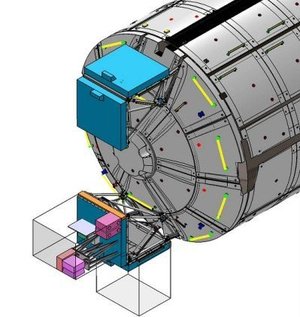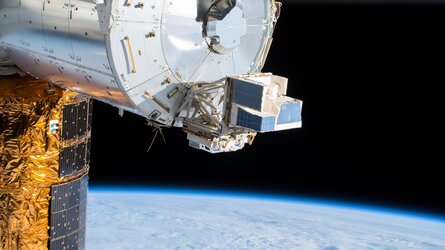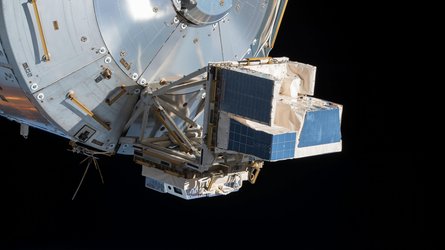Accept all cookies Accept only essential cookies See our Cookie Notice

About ESA
The European Space Agency (ESA) is Europe’s gateway to space. Its mission is to shape the development of Europe’s space capability and ensure that investment in space continues to deliver benefits to the citizens of Europe and the world.
Highlights
ESA - United space in Europe
This is ESA ESA facts Member States & Cooperating States Funding Director General Top management For Member State Delegations European vision European Space Policy ESA & EU Space Councils Responsibility & Sustainability Annual Report Calendar of meetings Corporate newsEstablishments & sites
ESA Headquarters ESA ESTEC ESA ESOC ESA ESRIN ESA EAC ESA ESAC Europe's Spaceport ESA ESEC ESA ECSAT Brussels Office Washington OfficeWorking with ESA
Business with ESA ESA Commercialisation Gateway Law at ESA Careers Cyber resilience at ESA IT at ESA Newsroom Partnerships Merchandising Licence Education Open Space Innovation Platform Integrity and Reporting Administrative Tribunal Health and SafetyMore about ESA
History ESA Historical Archives Exhibitions Publications Art & Culture ESA Merchandise Kids Diversity ESA Brand Centre ESA ChampionsLatest
Space in Member States
Find out more about space activities in our 23 Member States, and understand how ESA works together with their national agencies, institutions and organisations.
Science & Exploration
Exploring our Solar System and unlocking the secrets of the Universe
Go to topicAstronauts
Missions
Juice Euclid Webb Solar Orbiter BepiColombo Gaia ExoMars Cheops Exoplanet missions More missionsActivities
International Space Station Orion service module Gateway Concordia Caves & Pangaea BenefitsLatest
Space Safety
Protecting life and infrastructure on Earth and in orbit
Go to topicAsteroids
Asteroids and Planetary Defence Asteroid danger explained Flyeye telescope: asteroid detection Hera mission: asteroid deflection Near-Earth Object Coordination CentreSpace junk
About space debris Space debris by the numbers Space Environment Report In space refuelling, refurbishing and removingSafety from space
Clean Space ecodesign Zero Debris Technologies Space for Earth Supporting Sustainable DevelopmentLatest
Applications
Using space to benefit citizens and meet future challenges on Earth
Go to topicObserving the Earth
Observing the Earth Future EO Copernicus Meteorology Space for our climate Satellite missionsCommercialisation
ESA Commercialisation Gateway Open Space Innovation Platform Business Incubation ESA Space SolutionsLatest
Enabling & Support
Making space accessible and developing the technologies for the future
Go to topicBuilding missions
Space Engineering and Technology Test centre Laboratories Concurrent Design Facility Preparing for the future Shaping the Future Discovery and Preparation Advanced Concepts TeamSpace transportation
Space Transportation Ariane Vega Space Rider Future space transportation Boost! Europe's Spaceport Launches from Europe's Spaceport from 2012Latest
Elves seen from space
Thank you for liking
You have already liked this page, you can only like it once!
Artist impression of lightning in clouds seen from space followed by a blue flash that lasts 10 micro seconds, a blue jet lasting 400 milliseconds and an elve generated by the blue flash that lasts for 30 microseconds. The International Space Station solar panels are shown in the foreground.
Dark clouds, the smell of rain on a hot sidewalk, the flashes of intense light followed by a loud crackling and then a low, rolling thunder – who doesn’t love a good summer thunderstorm. We’ve all seen one, heard one, or been completely soaked by one. But how much do we really know about this weather phenomenon?
As it turns out, there are a lot of things left to discover. Things like blue jets, elves and red sprites. Bizarre-sounding things. Things that are very difficult to observe from the surface of the Earth. As a Nature paper reports, however, the European Atmosphere-Space Interactions Monitor (ASIM) observatory on the International Space Station is helping scientists find answers.
Looking down on Earth’s weather from the International Space Station 400 km above, ASIM’s enhanced perspective is shedding new light on weather phenomena and their characteristics.
The collection of optical cameras, photometers and an X- and gamma-ray detector was installed on the Space Station in 2018. It is designed to look for electrical discharges originating in stormy weather conditions that extend above thunderstorms into the upper atmosphere.
A blue jet is a form of lightning that shoots upwards from thunderstorm clouds. They can reach as far 50 km into the stratosphere and last less than a second. The space storm-hunter measured a blue jet that was kicked off with and intense five 10-microsecond flash in a cloud near the island of Naru in the Pacific Ocean.
The flash also generated equally fantastic-sounding ‘elves’. Elves are rapidly expanding ring of optical and UV emissions at the bottom of the ionosphere. Here, electrons, radio waves and the atmosphere interact to form these emissions.
Capturing these phenomena using the highly sensitive ASIM tools is vital for scientists researching weather systems on Earth. The observations hold clues to how lightning is initiated in clouds and investigators think these phenomena could even influence the concentration of greenhouse gasses in Earth’s atmosphere, underscoring once more how important it is to find out exactly what’s going on above our heads.
-
CREDIT
DTU Space, Mount Visual / Daniel Schmelling -
LICENCE
ESA Standard Licence
-
Closed captions available Captions and subtitles are available (automatically generated by YouTube) - select your language using the YouTube player controls. A non-YouTube version is available using the 'download' button above.
-
Animation
-
-
-

ASIM equipment on CEPA

Storm hunter turns two

Terrestrial gamma-ray flash

ASIM on Columbus















 Germany
Germany
 Austria
Austria
 Belgium
Belgium
 Denmark
Denmark
 Spain
Spain
 Estonia
Estonia
 Finland
Finland
 France
France
 Greece
Greece
 Hungary
Hungary
 Ireland
Ireland
 Italy
Italy
 Luxembourg
Luxembourg
 Norway
Norway
 The Netherlands
The Netherlands
 Poland
Poland
 Portugal
Portugal
 Czechia
Czechia
 Romania
Romania
 United Kingdom
United Kingdom
 Slovenia
Slovenia
 Sweden
Sweden
 Switzerland
Switzerland


























